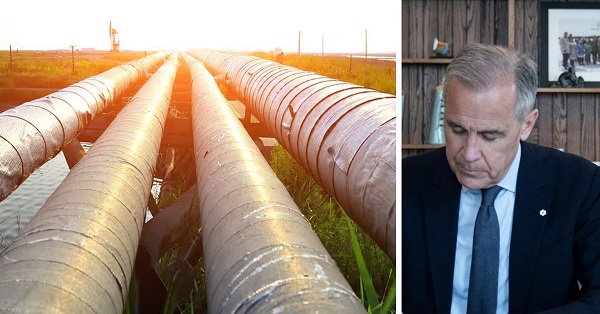Education
Spending per K-12 student in Canada ranged from $13,494 in Alberta to $19,484 in Quebec in 2022/23

From the Fraser Institute
By Michael Zwaagstra, Max Shang and Milagros Palacios
Spending per student (kindergarten to grade 12) in Canada ranged from a low of $13,494 in Alberta to a high of $19,484 in Quebec in 2022/23, finds a
new study published by the Fraser Institute, an independent, non-partisan Canadian public policy think-tank.
Most people—parents included—don’t understand how much is being spent educating students in public schools across Canada, which is critical before parents begin to evaluate whether they’re getting good value for the money,” said Michael Zwaagstra, senior fellow with the Fraser Institute and co-author of Education Spending in Public Schools in Canada, 2025 Edition.
The study finds that inflation adjusted per student spending on public schools in Canada increased nationally by 5.9 per cent over between 2013/14 and 2022/23. A different way to think about this increase in spending is to analyze how much was required to offset changes in student enrolment and inflation. The analysis shows that over this time period (2013/14 to 2022/23) an additional $6.5 billion was spent over and above what was needed to compensate for more students and inflation.
The spending analysis also includes different categories such as compensation, capital and other spending as categorized by Statistics Canada. Compensation (salaries, wages, fringe benefits, and pensions) contributed the most to the total growth in spending on public schools from 2013/14 to 2022/23.
In total, Quebec experienced the largest increase at 40.6 per cent. Prince Edward Island (14.5 per cent) and Nova Scotia (10.8 per cent) experienced the next largest increases in spending per student, while Saskatchewan (-14.8 per cent), Alberta (-17.5 per cent), and Newfoundland & Labrador (-11.2 per cent) were the only provinces to experience meaningful declines during this same period.
“When it comes to our children’s education, it’s important to understand exactly what’s happening with spending in public schools, and, most importantly, to question how the money spent is being put to use,” said Zwaagstra.
Per student spending in public schools across the provinces 2022/23
Province Per-student dollars
Canada 16,579
Quebec 19,484
Prince Edward Island 17,475
New Brunswick 17,346
Manitoba 17,036
Nova Scotia 16,800
Ontario 16,164
Saskatchewan 15,774
British Columbia 15,116
Newfoundland &Labrador 14,190
Alberta 13,494
Education Spending in Public Schools in Canada, 2025 Edition
- Total education spending in public schools over the last 10 years increased from $63.0 billion in 2013/14 to $88.4 billion in 2022/23, a nominal increase of 40.3%.
- Per-student spending adjusted for inflation (price changes), increased by 5.9% nationally from 2013/14 to 2022/23.
- The highest inflation-adjusted spending increases (per student) occurred in the provinces of Quebec (40.6%), Prince Edward Island (14.5%), Nova Scotia (10.8%), and British Columbia (9.3%).
- Five provinces experienced decreases in inflation-adjusted per-student spending—Alberta (17.5%), Saskatchewan (14.8%), Newfoundland & Labrador (11.2%), Manitoba (3.0%), and Ontario (1.7%).
- Quebec had the second lowest level of per-student spending in public schools in 2013/14 and now has the highest. Prince Edward Island went from seventh in per-student spending to second highest.
- On the other hand, Saskatchewan went from the highest in per-student spending to seventh, and Alberta went from fifth highest to tenth, the lowest.
- Even though British Columbia recorded the fourth-highest growth in adjusted per-student spending, it still ranks eighth in per-student spending in Canada.
- Student enrolment across Canada increased by an average of 5.6% from 2013/14 to 2022/23. Only Newfoundland & Labrador saw a decrease in enrolment (4.9%).
- Compensation remains the largest and costliest aspect of education spending and has contributed the largest portion to the growth of total education spending in Canada.
Artificial Intelligence
The AI Threat To Critical Thinking In Our Classrooms


From the Daily Caller News Foundation
By Sheri Few
The expensive private Waldorf School of the Peninsula in the Silicon Valley, where technology executives send their kids, has ZERO technology in grades K-8.
Technology has no place in kindergarten through eighth grade (K-8). Evidence abounds that learning through books, pencil and paper, and dialogue with real people builds the strongest foundation for learning and provides cognitive, emotional and practical benefits.
The expensive private Waldorf School of the Peninsula in the Silicon Valley, where technology executives send their kids, has ZERO technology in grades K-8. Their website says, “Brain research tells us that media exposure can result in changes in the actual nerve network in the brain, which affects such things as eye tracking (a necessary skill for successful reading), neurotransmitter levels, and how readily students receive the imaginative pictures that are foundational for learning.”
Antero Garcia, Associate Professor in the Graduate School of Education at Stanford University, explains why he has grown skeptical about digital tools in the classroom: “Despite their purported and transformational value, I’ve been wondering if our investment in educational technology might in fact be making our schools worse.”
States like Ohio are now requiring artificial intelligence (AI) policies for all K-12 schools, and AI appears to be the latest technology fad for government-sponsored education.
Most government (public) schools have already morphed into digital-based learning centers, relegating teachers to facilitators, with no improvement in student achievement. But adding AI to the tech-driven education system poses a great threat to a child’s cognitive development and safety.
According to Harvard University, “Brains are built over time, from the bottom up. The brain’s basic architecture is constructed through an ongoing process that begins before birth and continues into adulthood. After a period of especially rapid growth in the first few years, the brain refines itself through a process called pruning, making its circuits more efficient.” These “use it or lose it” developmental phases of the brain happen in early childhood and through adolescence. If an adolescent depends on AI to think for his academic success, rather than his developing brain, his brain, and he will be shortchanged. Harvard says, “While the process of building new connections and pruning unused ones continues throughout life, the connections that form early provide either a strong or weak foundation for the connections that form later.”
An MIT study, coordinated with OpenAI, involved over 1,000 people who interacted with OpenAI’s ChatGPT for over four weeks. It revealed that some users became overly reliant on the tool’s capabilities, leading to “an unhealthy emotional dependency” on ChatGPT as well as “addictive behaviors and compulsive use that ultimately results in negative consequences for both physical and psychosocial well-being.”
A more recent study by MIT found that using ChatGPT and similar tools to write essays resulted in lower brain activity. Students who relied on AI got worse at writing essays when asked to perform that task without the AI assistance. The lead author of the study, who released the findings prior to the traditional peer review process, said, “What really motivated me to put it out now before waiting for a full peer review is that I am afraid in six-to-eight months, there will be some policymaker who decides, ‘let’s do GPT kindergarten.’ I think that would be absolutely bad and detrimental.” She went on to say, “Developing brains are at the highest risk.”
AI can pose other serious risks to children, as recently proven when ChatGPT was caught steering gender-confused children toward radical LGBTQ groups that prey on their vulnerabilities, according to a Daily Wire investigation. The investigation revealed that ChatGPT encourages gender-confused children to reach out to radical LGBTQ organizations, obtain so-called “gender-affirming” resources like chest binders, and directs them to YouTube channels that contain graphic reviews of fake male genitalia. This information is provided to children as young as 12 years old, and the platform egregiously advises how to access services behind their parents’ backs!
Many concerns have been raised about data privacy during the technology boom of the last few decades. The data privacy threat with AI is much more concerning! A white paper from Stanford University reports, “AI systems are so data-hungry and intransparent that we have even less control over what information about us is collected, what it is used for, and how we might correct or remove such personal information.”
Supporters of AI in education argue it prepares children for the job market, but this is questionable since technology evolves so rapidly — even current computer science majors are obsolete! Teaching advanced math and science equips students better for an unpredictable future, as forecasting technological trends is unrealistic.
Given that there is already evidence that AI can lie, be biased and make up source references, it should not be a tool used by anyone trying to teach children to understand truth, logic, fairness, values and subjects like literature and history.
Dependency on AI technology will only add to the decline of academic achievement and a student’s desire to learn. And, what’s worse, AI can corrupt children and extract untold amounts of private data without their knowledge, much less the knowledge and consent of their parents.
As schools — especially government schools — rush into using AI and other technological crutches, children will suffer.
I pray that decision makers will take a long pause on implementing AI in schools, especially in grades K-8. As the MIT study proved, AI actually impedes learning, while there is abundant evidence that books, paper, pencils and human teachers are effective learning tools.
Sheri Few is the Founder and President of United States Parents Involved in Education (USPIE), whose mission is to end the U.S. Department of Education and all federal education mandates. Few has written extensively about critical race theory and served as Executive Producer for the documentary film titled “Truth & Lies in American Education.” Few is also the host of USPIE’s podcast, “Unmasking Government Schools with Sheri Few,” which educates Americans on the various forms of indoctrination, harmful policies and affronts to parents’ rights occurring in government schools across the country. Listen to “Unmasking Government Schools with Sheri Few” on YouTube, Facebook, Spotify and X.
Alberta
Alberta’s New School Library Guidelines Make Sense

From the Frontier Centre for Public Policy
New rules on sexually explicit books in libraries ensure that students only have access to age-appropriate materials
Should books with sexually explicit content be in school libraries?
If your answer to this question is “no,” then you agree with the Government of Alberta’s recent ministerial order on school libraries. If your answer is “yes,” then you agree with the critics who oppose this order. It is that simple.
Judging by the reaction of the government’s critics, one might think the Alberta government had just enacted a sweeping book ban. However, the guidelines announced by Education Minister Demetrios Nicolaides are clearly targeted at sexually explicit content. Unless you believe young children should have access to sexually explicit content at school, it makes little sense to oppose these new guidelines.
Lest one assume no school would allow sexually explicit content in its library, the Alberta government posted excerpts from four American books found in many Alberta school libraries. There is no question that the content in these books is sexually explicit, something any reasonable person can confirm.
The Alberta Teachers’ Association (ATA), which seems to oppose every announcement this government makes, issued a statement claiming these guidelines would “result in the removal of valuable and inclusive resources from our libraries.” However, it’s unlikely many parents think there’s anything valuable or inclusive about providing children with sexually explicit content.
In its news release, the ATA also argued these guidelines would “have a chilling effect on our schools and signal to students who are coming to understand themselves that some expressions of their gender and sexual identities are shameful and should be hidden away.”
However, these guidelines do not single out or target any gender identity or sexual orientation. Instead, the focus is entirely on books that contain sexually explicit content. Students will still be able to access books that portray a variety of gender identities and sexual orientations from their school libraries. Additionally, these guidelines do not apply to books that address topics such as puberty and menstruation.
Critics argue that these guidelines impose an unreasonable burden on school boards and distract them from more important issues. However, there is nothing unreasonable about requiring school boards to make clear what criteria they use when selecting books for their school libraries. Frankly, this should have already happened years ago.
Regarding the argument that these guidelines distract from more pressing issues in education, nothing in this announcement detracts from other current initiatives in Alberta schools. In fact, the announcement was made in July, one of the slowest times for the education system. If the government really wanted to distract from other issues, one might have expected this announcement to happen in September or October, when the school year is just beginning.
In addition, some school boards have been vocal in their support for these new guidelines. For example, Nicole Buchanan, chair of the board for Red Deer Public Schools, spoke in favour of the library guidelines at a provincial news conference. As part of her remarks, she said, “This isn’t about banning books or silencing voices. It’s about recognizing that some content simply isn’t appropriate in a K-12 setting.”
Buchanan is absolutely right. Just because some things are widely available to students outside of school doesn’t mean they must be accessible within school. For example, as a teacher, I understand many students watch television shows and YouTube videos that contain plenty of profanity. However, that doesn’t mean it’s appropriate for me to use the same words or show the same videos in class.
As a society, we recognize that schools have a responsibility to protect students and ensure they are exposed to positive influences. While we cannot control what students do outside of school, there is certainly an expectation that any content we provide to students in school is age-appropriate. This is true whether we are in the classroom or in the school library.
The Alberta government did the right thing when it introduced guidelines for school libraries. There is nothing unreasonable about ensuring students, particularly those in elementary school, are not exposed to sexually explicit content in school.
Parents and students deserve no less. The Alberta government has made the right decision.
Michael Zwaagstra is a public high school teacher and a senior fellow with the Frontier Centre for Public Policy
-

 Business1 day ago
Business1 day agoBigger Government, Bigger Bill: PBO reveals $71.1 billion in federal personnel spending in 2024–25
-

 Alberta1 day ago
Alberta1 day agoAlberta’s fiscal update—and $6.5 billion deficit—underscores need for spending reductions
-

 Alberta1 day ago
Alberta1 day agoNatural gas connection to breathe new life into former Alberta ghost town
-

 COVID-192 days ago
COVID-192 days agoRFK Jr. revokes emergency use authorization for COVID shots
-

 Business1 day ago
Business1 day agoCanadians can’t afford another Ottawa budget failure
-

 Crime2 days ago
Crime2 days agoPolice Say Victim Drugged, Kidnapped From Alberta in B.C. Human Trafficking and Cocaine Dealing Network
-

 Energy1 day ago
Energy1 day agoGuess there’s a “business case” after all. Europe wants LNG, but can Canada still provide it?
-

 Crime1 day ago
Crime1 day agoU.S. Treasury Warns of $312 Billion in Chinese Laundering For Mexican cartels









